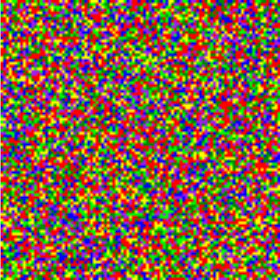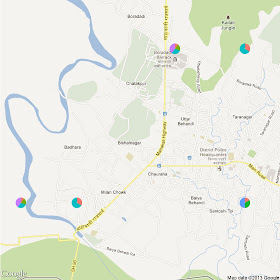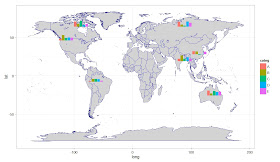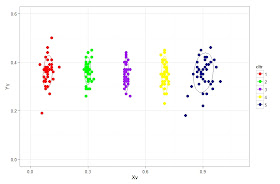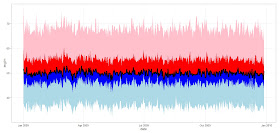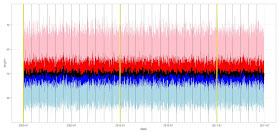myd <- data.frame (X = c(1:12,1:12),
Y = c(8, 12, 13, 18, 22, 16, 24, 29, 34, 15, 8, 6,
9, 10, 12, 18, 26, 28, 28, 30, 20, 10, 9, 9),
group = rep (c("A-group", "B-group"), each = 12),
error = rep (c(2.5, 3.0), each = 12))
require(ggplot2)
require(grid)
# line and point plot
f1 = ggplot(data = myd, aes(x = X, y = Y, group = group) ) # lesion becomes a classifying factor
f2 <- f1 + geom_errorbar(aes(ymin = Y - error, ymax = Y + error), width=0.3) +
geom_line() + geom_point(aes(shape=group, fill=group), size=5)
f3 <- f2 + scale_x_continuous("X (units)", breaks=1:12) +
scale_y_continuous("Y (units)", limits = c(0, 40), breaks=seq(0, 40, by = 5)) +
scale_shape_manual(values=c(24,21)) +
scale_fill_manual(values=c("white","black")) +
stat_abline(intercept=0, slope=0, linetype="dotted") +
annotate("text", x=11, y=10, label="X") +
theme_bw()
optns <- theme (
plot.title = element_text(face="bold", size=14),
axis.title.x = element_text(face="bold", size=12),
axis.title.y = element_text(face="bold", size=12, angle=90),
panel.grid.major = element_blank(),
panel.grid.minor = element_blank(),
legend.position = c(0.2,0.8),
legend.title = element_blank(),
legend.text = element_text(size=12),
legend.key.size = unit(1.5, "lines"),
legend.key = element_blank()
)
f3 + ggtitle ( "MY awsome plot for publication") + optns

















